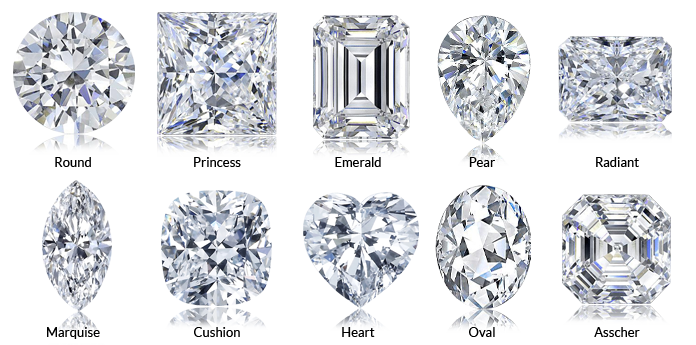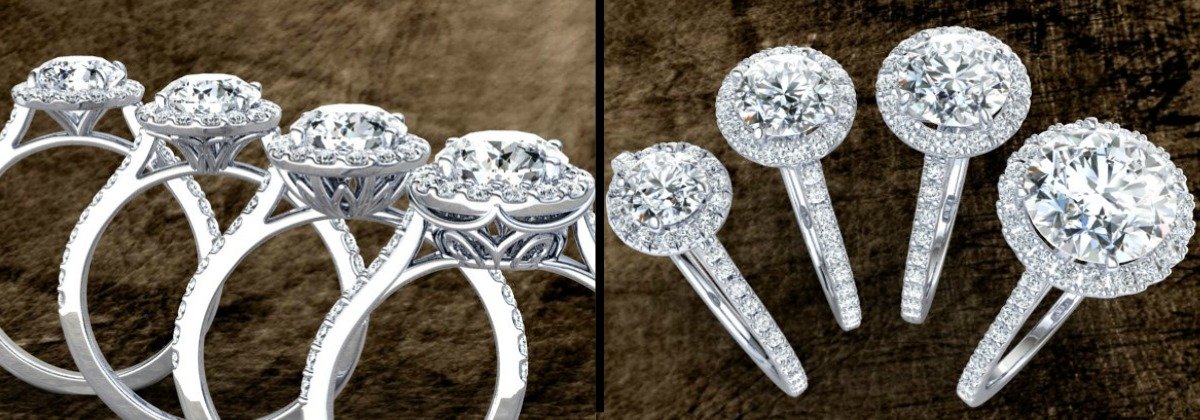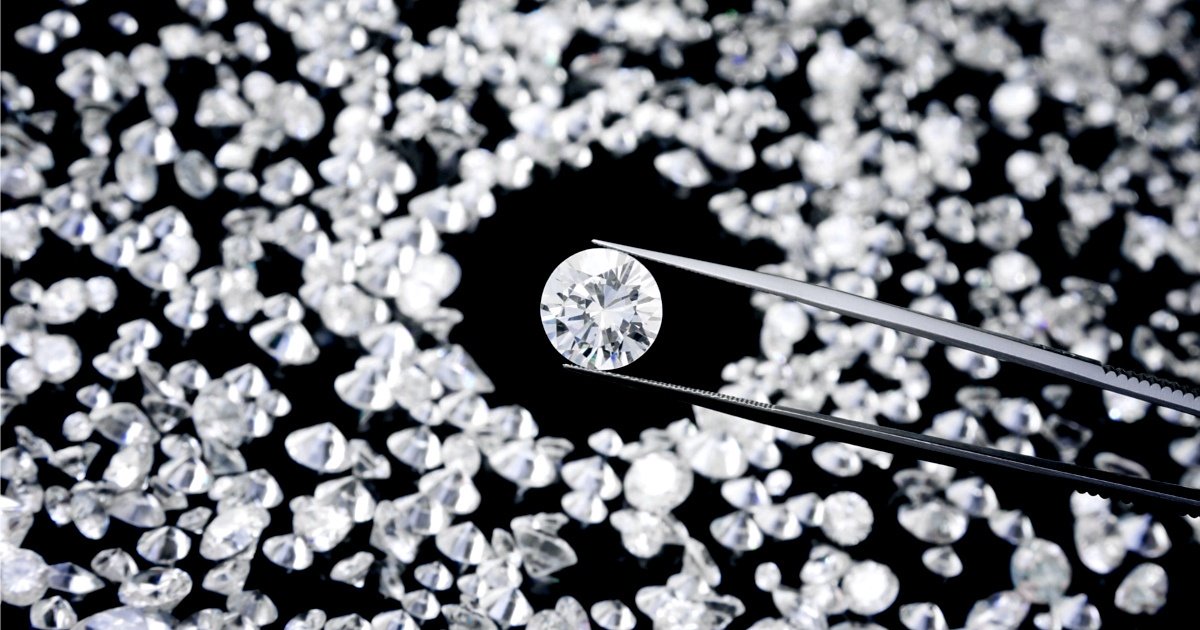
Finding that special someone who you wish to share your journey with should never be taken for granted. You’re in a very fortunate position.
Pairing up your proposal with the perfect engagement ring will upgrade that moment to a highlight of anyone’s life. And I’m sure that’s what you’re aiming for.
An integral part of the engagement ring is the main diamond it is set with. No design can save a compromised diamond. Although you might plan on upgrading your diamond in the future, this very seldomly happens. Especially ladies grow very attached to the diamond they first laid eyes on during the proposal.
Remodeling the ring in a few year’s time is fun exercise, and good gift idea to shelf for more memorable anniversaries and milestones. But that diamond you proposed with with be used in the next ring 99% of the time. It’s part of your story now.
Navigating the diamond waters can seem overwhelming at first.
Most diamond buyers are first-timers, and there is a misconception that diamonds are tricky to understand, and the only way to play it safe is with extensive research. You’re welcome to do your research – I’ve written well over 100 000 words on the topic, but we’re here to help. If we can’t get your design idea to perfect – we’ve failed.
We really want to understand what you’re looking for, and help you find exactly that. If you need advice, we’ll gladly help… but at the end of the day this whole exercise is to give a very special lady her dream engagement ring.
Making sense of the millions of available diamond combinations.
By just using three characteristics in the basic 4C diamond model you have around 13 000 possible combinations of colour, clarity, cut (and shape). The shape is not part of the 4C model since every shape has its own way of working with the 4C variables. I’ve deliberately excluded weight (carat) since that bumps the number into infinity.
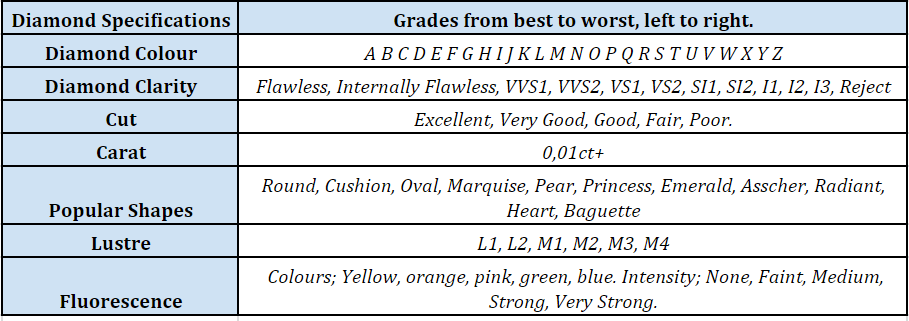
As the size increase, higher quality diamonds become exponentially more expensive.
If we use an H-coloured, VS1-clarity round diamond weighing 0,50ct you can expect to pay around $1200.
Simply double the weight to 1,00ct and you’re in for around $5300 – more than 4 times the price of the 0,50ct diamond.
Double the weight again to 2,00ct – you’re in for $20 000.
Using ball-park math you can assume price increases fourfold for every doubling in weight.
Being well stocked up to the 1,20ct mark makes sense since that covers 80% of our business. But once we move up to 1,50ct, 2,00ct and higher we have a finely curated selection. If you’re interested in an H colour 1,50ct diamond, we might have a 2,00ct H to show the colour, and a 1,50ct J to show the size. We try to always ensure we have a matrix that can show you most colour-to-size combinations in the most popular shapes.
With our special-order system being a very well-oiled machine, we often end up importing larger diamonds based on the ideal specifications you’re looking for.
If we chose to stock 2,00ct diamond in every shape, colour and clarity combination there’s no way we could keep our pricing structure as lean as it is. Holding costs would be sky-high. That would not translate into better value for you.
Before we get started I think the obvious elephant in the room is that every jeweller you visit will promise “direct sourcing” or whatever phrases they cook up. “From mine to finger” is another popular term.
The manner in which we source is unique and greatly advantageous to you. And to prove it’s not some concept I’ve taken a screenshot of our manufacturing load.
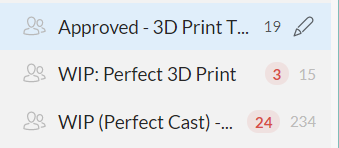
268 rings in progress. And more than half would be set with a diamond specially ordered for a customer with their exact specifications.
That’s unrivalled scale in the local higher-end engagement ring market. And this “yes” vote from customers makes me optimistic about getting your order too.
How everyone else sources diamonds, a.k.a “how not to source diamonds”.
Every jeweller in South Africa uses a very common method of sourcing using local diamond dealers who move consignment stock around between jewellers.
Very few jewellers stock unset/loose diamonds. I’ve always found it odd since any flaws would be hidden below claws and to really get a grasp of what you’re buying you need to see the diamond on its own, with decent magnification… under white light. Certain LED lights used in jewellery displays rotate tiny bulbs to create a stunning, but very fabricated sparkle.
You might visit a jeweller who doesn’t have unset diamonds, but they promise to have diamond ready in a day or two. They’ll get it in from head office or some story along those lines.
They don’t have the diamond you’re looking for. In 99% of cases, they’ll have to use the local diamond dealer network to source a diamond you might be interested in.
Before the “perfect” diamond is displayed to you two days later, it’s been through a few hoops. With each hoop being another person who wants his share of the deal.
The jeweller can source via 5 primary channels;
- He can give other jewellers a call, but jewellers don’t dish out trade discounts. Regardless of who buys the diamond, you’ll be paying his retail price.
- The jeweller can attempt to source an uncut/rough diamond and have it polished (manufactured into a cut diamond). This sounds much easier than it is. First of all, close to zero local jewellers have the permits to trade in or polish rough diamonds. It is a field of its own. The number of diamond polishers has decreased from well over 8 000 to around 150 in the past 7 or 8 years. Regulations force rough buyers to polish a certain percentage of diamonds that are purchased locally… locally. The rest is exported and sold to the highest bidding jewellers across the globe. These factories aren’t open for a single job here and there when a jeweller strolls in. Nada. Keep in mind rough diamonds are sold in large parcels using a tender system. If a jeweller buys a single rough diamond somewhere he probably overpaid.
- He can try and buy a diamond from these local factories but would face resistance for two good reasons. First of all the factories prefer working with diamond dealers, and since these dealers make their living from supplying jewellers they wouldn’t directly compete with them. Secondly, once they’re cut, the SA Diamond Board is fine with them being exported. They’re not for sale.
- International factories. This is our avenue of choice and without a doubt the best way to source in terms of price and variety. We’ll get to the details, but they work with bulk orders and would not reply to a jeweller looking for one or two diamonds. Some of these factories add over 1000 diamonds to their inventory. Per day. To keep prices down they move their stock at a rapid rate which relies on high volume orders.
- Your local diamond dealer, who will drive around all day between jewellers moving stock around, and liaising between the owners of diamonds and jewellers. This is the easiest route, but often the only available route for local jewellers who want to show unset diamonds to visitors.
Now let’s work an example to see how this local system inherently bloats prices;
A local diamond cutting factory gives the diamond on consignment to a diamond dealer at R100 000. He paid R70 000 for the rough diamond and after his costs of say R10 000, he’s happy with his R20 000 profit. Cumulative profit; R20 000.
The diamond dealer who your jeweller put on the job to find that diamond you’re looking for finds the close-enough diamond (good job!), and for his effort and risk marks it up to R120 000. He makes a nice R20 000 profit and the cumulative profit is at R40 000 now.
The jeweller isn’t running a charity so to ensure he can keep the lights on he’ll mark it up to at least R150 000. He makes R30 000 on the diamond part of the sale, and he’ll make a good profit on the setting too. Cumulative profit – R70 000. If this seems exaggerated it’s actually a quite low-profit margin for a jeweller. Some will add considerably more.
Not very “wholesale” and “direct”.
Let’s backtrack to the first stop – the factory giving the diamond out on consignment to a diamond dealer. As explained these local factories aren’t cheap. They’re often just in place to adhere to certain regulations in South Africa. They’ll eventually export their stock, so why must they lower their margins to sell to local diamond dealers?
The very same diamond in the working example above could be sourced from a mega-factory for around R60 000. If I sell that diamond at R66 000 with a 10% markup you’re paying less than the diamond dealer in the story above.
You’re winning.
Not only are the prices better – the best craftsmen aren’t behind diamond polishing benches in South Africa anymore. These massive factories aborad invest into the absolute best technologies to ensure manufacturing costs are low – and quality is top shelf.
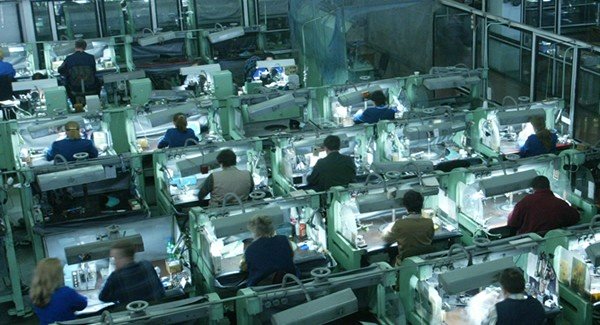
*A single room in modern diamond polishing factory.
How we source your ideal diamond;
We’ll check our stock first.
Kobus Poggenpoel, co-founder, spends his every day sourcing diamonds. Not just special imports – also for stock. Every single diamond we buy goes through a rigorous progress to ensure it’s top-shelf. Finely monitoring markets, we often identify certain categories are relatively cheaper than others, and stock up on those, so we often have your perfect diamond in stock.
If we don’t have that perfect diamond – we start the special order process, to get some quotes over to you.
Every morning we receive stock lists from our suppliers. As mentioned some of these factories add well over 1 000 diamonds per day.
We compile these filed into one stock list, and then start our systematic approach to finding the very best buys out of these half a million diamonds.
Let’s say you’re looking for a 1,00ct J VS2 diamond. (We close to always have this in stock by the way…)
Step One – The 4C’s
Cut, colour, clarity, and carat are collectively referred to as the 4C’s. These are the main variables that affect the price and appearance of a diamond. If you’re unfamiliar with them this quick read will be worth 5 minutes; Ultimate 1 Page Diamond Buying Guide (link).
Setting Search Parameters
Shape; whether round, oval, cushion this is always the starting point. These are the most popular diamond shapes;
Colour; Your colour of choice plus its neighbouring colours. For our example source we’ll set the colour range to I-J-K. Sometimes there are great deals a single colour higher or lower – just depends on the market that day.
Clarity; On the wholesale side of things the suppliers know we can’t quickly come around to inspect a diamond. They have a grade called “eye-clean; yes/no”. By default, we only consider eye-clean diamonds, but to ensure nothing slips through we’ll usually pin the clarity to not drop below VS2. If a supplier mentions a unicorn that has a lower clarity grading but still appears free of impurities to the naked eye we’ll take a look.
Cut is the most important C. If a diamond was poorly cut it looks like a dull piece of glass – and you didn’t pay dull glass prices. To ensure our diamonds are exceptionally manufactured and have optimal light reflection and refraction we only stick to Very Good and Excellent cut diamonds.
Carat Size; we’ll optimise for this in a minute.
At this stage, we might be left with a few thousand options. We can easily just look for the cheapies, but we still have some elimination to do.
Beyond the 4Cs
Diamond grading certificates are consumer buying tools. As mentioned, on the wholesale side of things there are quite a few more parameters to run through.
The most important is Lustre. To ensure a diamond has optimal life, brilliance and fire it needs to be 100% free of milkiness and any “clouds”. Lustre is most commonly affected by fluorescence but refers to the effect of this fluorescence – which isn’t constant. As long as a diamond is L1 (top lustre) no degree of fluorescence would compromise the visual appeal of your diamond.
Fluorescence ties in with lustre, but the connection is rarely explained, or understood. In its most basic form fluorescence is a visible reaction than around 35% of diamonds have when exposed to UV light. Unless you work at a rave or Ten Pin Bowling Alley, how your diamond appears under UV light might seem like top shelf useless information. But the sun is also emitting UV rays in a less concentrated way, and the degree and colour of the fluorescence can have an effect, beneficial or detrimental, on the appearance of your diamond.
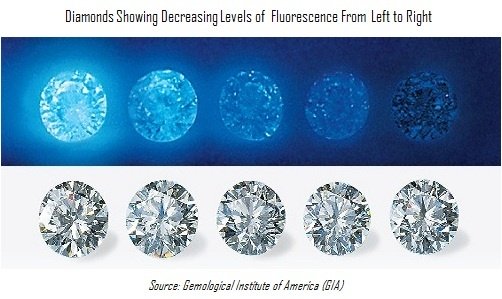
Unfortunately the effect of fluorescence isn’t consistent, and that’s why I think the Lustre grade that issues a grade on possible detrimental effect of fluorescence is a better metric. Stick to L1 Lustre and ignore the fluorescence line on the grading report.
Strong and very strong blue fluorescence can actually boost the perceived colour of a diamond in the J-K-L-M range by up to a full shade.
We don’t have set metrics for fluorescence. When looking for your diamond we’ll take into consideration all the variables to see if it would be beneficial or not in the range of diamonds you’re interested in.
We only import GIA or HRD graded diamonds. We’ve found these to be the best and most consistent diamond grading laboratories. Although we don’t buy blindly using only the supplied grading report, it does provide great assurance. Both HRD and GIA are world renowned with multiple laboratories around the round should you wish to verify a diamond’s grade. Sticking to these laboratories you know you’re getting the diamond you paid for.
Optimise for size (usually)
Everyone would agree that engagement rings simply look nicer when set with larger centre diamonds.
Here are 4 variants of very popular Leila design set with a 0,50ct, 1,00ct, 1,50ct, 2,00ct diamond;
All compromised diamonds have been eliminated at this stage, so we can either stick to a set size you prefer, or recommend a range of options that stick to your budget but offer different size-colour combinations.
At this stage we’d a spreadsheet over to you for browse and consider your options. We try to limit the options to under 20 diamonds.
Photo and Video Time!
Even after all this effort we still won’t rely solely on the integrity of the certificate. Diamonds are graded by people, and people can make mistakes.
Grab a coffee. Browse the list.
After you’ve selected a few finalists it’s a good time to have with chat with us. Kobus selected the options so he’s a good guy to call. I’m also available for any questions and advice you might need. Your consultant handles special orders every day, so they’re well versed in this line of business. We’re all here to help.
Diamond imaging has improved tremendously over the years and we request photos and videos of the shortlisted diamonds. Taking HD photos and video is time consuming on the suppliers side so we try to limit requests to 2 or 3 diamonds. We’ll analyse the images and get them over to you with our recommendation.
The photo below was a supplier snap of a recent special order. As you can see the diamond is photographed in a low light environment to enable you to see precisely whats going on inside the diamond;
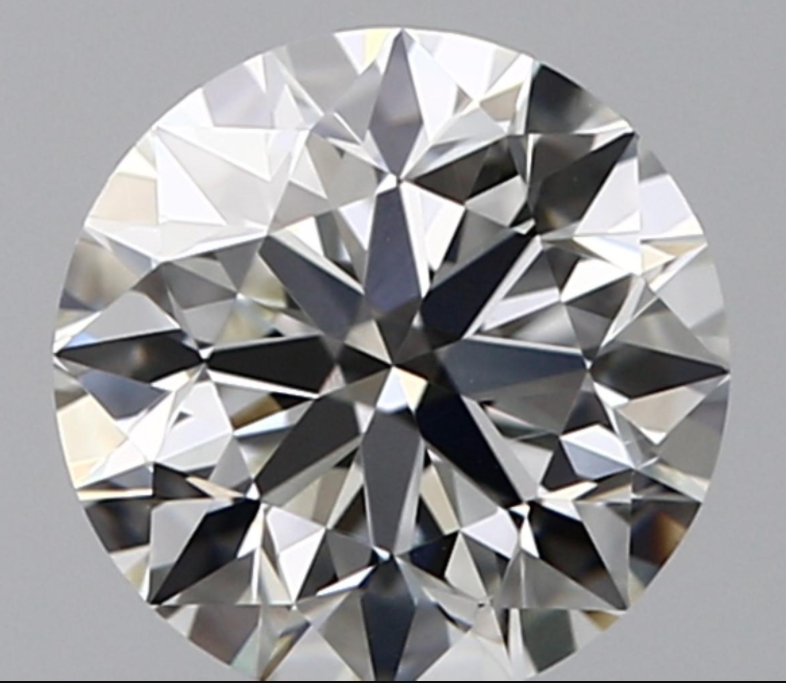
When you see that perfect stone it’s time to get the ball rolling. With time differences and many buyers looking at the same diamonds we need to move quickly to secure the diamond. We’ll call the factory to check availability and place it on hold. Unfortunately, the best buys don’t lay around for days and making a same day call at this stage is a good idea.
Your peace of mind upgrade guarantee.
We have an upgrade policy whereby you can upgrade your diamond at any time after your purchase, and if you do that, we will buy back the diamond we sold you initially. That is another reason we would not sell you a diamond we are not prepared to buy for our stock, irrespective of what the specification is according to the laboratory certificate.
The costs involved?
Usually zero.
We import parcels of diamonds at least three times a month, and by including your special order diamond with such an import, there is no additional cost involved, just an average waiting time of about two weeks for the parcel to arrive. We have all the measurements and can easily get going on the manufacturing of your ring.
I would hate dropping you, so we really go to great lengths to assert that we only import the best quality diamonds. Your risk with an order from us is zero.
We’re trying to further build this business – and that includes getting you to a very happy place.

Some very useful reading…
- The 4C’s of 1,00ct Diamonds
- The 4C’s – Which Is Most Important?
- Optimising Your R100 000 Engagement Ring Purchase.
- The Utimate 1 Page Diamond Buying Guide. (2017 Edition)
- The Price of a 1,00ct Diamond Engagement Ring In South Africa. (Market Research)
- Which Diamond Shape Appears The Largest?
- The 4C’s of Diamonds (2,00ct Edition)
- The Price of a 2,00ct Diamond Engagement Ring In South Africa. (Market Research)

